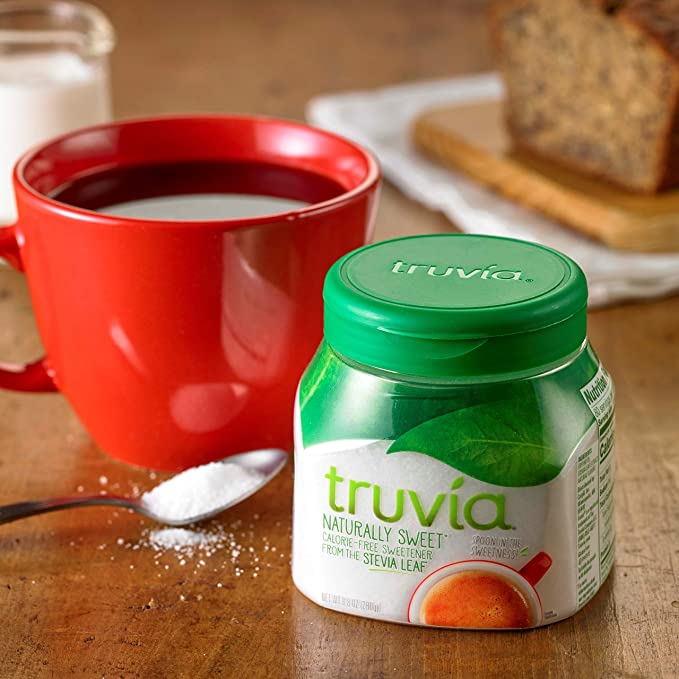20/4 Intermittent Fasting Meal Plan: Simple and Easy!
20/4 Intermittent Fasting Basics | foods for 20/4 Intermittent Fasting | 20/4 Intermittent Fasting Meal Plan
It’s no secret that many have found success on an Intermittent Fasting plan. With the freedom to choose the foods that you enjoy, on a schedule that fits with your lifestyle, what’s not to love about this type of diet?
If you aren’t familiar with Intermittent Fasting, there are basically two parts to an Intermittent Fasting schedule: a feeding window and a fasting window. There are certain hours that you restrict calories and certain hours that you eat.
Since Intermittent Fasting is more of a schedule of when to eat versus what to eat, many find that not worrying about foods to avoid or foods you have to eat actually leads to better outcomes and helps them stick with their Intermittent Fasting plan.
There are many types of Intermittent Fasting, but the 20/4 Intermittent Fasting method (also known as the Warrior Diet) is known for its rapid weight loss results. We will discuss the ins and outs of 20/4 Intermittent Fasting later on but there is one key difference from other types of fasting methods.
While there is technically a fasting window, food is not completely restricted during this time. There are certain foods to eat during this period of fewer calories, and certain weeks focus on different foods during the eating window.
Whether you are trying 20/4 Intermittent Fasting for weight loss or other health benefits, you may be wondering where to start with a meal plan. Or, maybe you have been trying 20/4 Intermittent Fasting for a while, but feel stuck in a rut with meal ideas.
Either way, we’ve got you covered when it comes to simple and easy meal ideas. We’ll even include some one pan ideas so clean up is a breeze. Keep reading below as we dive into what 20/4 Intermittent Fasting is, what foods to eat, and a 20/4 Intermittent Fasting meal plan that is sure to liven up your weeknight routine.

20/4 Intermittent Fasting Basics
20/4 Intermittent Fasting or the Warrior Diet was created in the early 2000s by Ori Hofmekler. He based the idea for this diet on the way that ancient warriors would eat. Ancient warriors would essentially have long periods of the day where there would be little food available to eat, as they lived in a hunter/gatherer society.
At the end of the day, the ancient warriors would feast on what food they were able to collect for that day. According to Ori Hofmekler, we can optimize our bodies through this type of eating schedule.
Proponents of 20/4 Intermittent Fasting claim the benefits range from improved energy levels, fat loss, improved insulin resistance, and reduced blood pressure. It’s important to note that Ori Hofmekler has a military background and he has stated that his claims are based on own his nutrition knowledge and survival skills. There is little, if any, scientific evidence to support his claims.
Since the Warrior Diet is a type of Intermittent Fasting, which has been widely studied, we do know that there are benefits to allowing the body to fast and having our food intake within a limited number of hours. This encourages a reduced number of calories and avoids overeating which can lead to weight gain and increased body fat.
There are a number of benefits of Intermittent Fasting aside from weight loss which includes improved insulin sensitivity (and lower blood sugar levels), fat loss, lower risk for heart disease and lower blood pressure.
One appealing aspect to 20/4 Intermittent Fasting is that you do not have to completely fast during your 20-hour fasting window. A few specific nutrient-dense foods are allowed in small amounts as well as black coffee, tea (without sugar or milk), and water. During your four-hour window, also known as your eating window, you are permitted to eat an unrestricted amount of calories. However, if you are sticking to Ori Hofmekler’s specific Warrior Diet, then he does give certain guidelines on what to eat during this time.
The Warrior Diet can be broken down into three different phases over the span of three weeks. While each phase follows the same pattern of restricted calories for 20 hours, and an eating window of four hours, there are some differences as to what foods are consumed during each phase.
Phase 1: While calorie content will vary based on your needs, you will generally follow a limited calorie intake during the day and the majority of your calories later in the day. This week is a detox where your body is adjusting to the new diet plan and you should avoid all processed sugar and sweeteners.
Phase 2: Again, the same pattern of restricted calories during the day and majority of calories in the evening is followed. This phase focuses on higher fat foods containing healthy fats as the body adapts to burning more fat for energy.
Phase 3: The same calorie restriction during the day and unlimited calories during the eating window is followed as well. This phase alternates between high-carbohydrates and high-protein during the main meal.
After the initial three weeks are complete, the individual may choose to rotate through the phases as desired. A vitamin supplement is encouraged if following the diet long term to ensure all nutrient needs are being met.

What foods can I eat for 20/4 Intermittent Fasting?
Some types of intermittent fasting don’t have specific guidelines on what to eat, and generally healthy foods are encouraged. The Warrior Diet, however, does have specific foods to focus on while on this diet plan. To get the best results out of 20/4 Intermittent Fasting, it’s best to follow the guidelines below.
20/4 Intermittent Fasting Meal Plan:
For all three phases, the 20-hour fasting window can only include the following foods:
- Fresh fruits and vegetables
- Clear broths
- Hard-boiled eggs
- Small amount of dairy
- Black coffee, tea, and water
For Phase 1 during the eating window focus on:
- Vegetables
- Meat, chicken, fish
- Yogurt, cheese
- Quinoa, rice, barley
For Phase 2 during the eating window focus on:
- Nuts/seeds
- Avocados
- Meat, chicken, fish, eggs
- Vegetables
For Phase 3 during the eating window (alternating between high-carb and high protein each day) focus on:
High-carb
- Potatoes
- Pasta
- Bread
- Rice
- Pumpkin
- Squash
- Oats
High-Protein
- Chicken
- Fish
- Meat
- Eggs
- Beans/legumes

20/4 Intermittent Fasting Meal Plan
So, now that we know what foods to focus on during each phase, let’s get more specific as to what meals and snacks could look like. Just because you focus on certain foods, doesn’t mean it has to be boring. There are plenty of ways to follow this diet plan without sacrificing on flavor and variety. Don’t be afraid to use plenty of seasonings and spices that fit your preferences.
While the Warrior Diet does not restrict caloric intake during the 4-hour window where most calories are consumed, it’s best to eat one serving of food and check in with yourself to see how you feel. Wait for around 20 minutes and then eat another serving of the same food if you are still hungry.
*Note the following meal plan is based on an 1800-calorie diet. Individual calorie needs can vary and it’s best to consult a dietitian or medical professional to determine your unique calorie needs.
Phase 1: Detox Meal Plan
| Meals | What to Eat |
| Breakfast | 1 cup plain Greek yogurt ½ cup raspberries Black coffee or tea |
| Snack | 1-2 hard-boiled eggs with Everything Bagel Seasoning (or any other seasoning you enjoy!) |
| Lunch | Mixed green salad with peppers, carrots, cucumbers (olive oil + vinegar dressing) 1 cup vegetable broth |
| Dinner (main meal) | One Pan Mexican Quinoa– Top with 1 ounce of goat cheese or feta cheese for extra flavor and calories. 1 cup grapefruit with chia seeds Banana bites with peanut butter Small glass of milk |
Phase 2: High-Fat Meal Plan
| Meals | What to Eat |
| Breakfast | 1 cup cottage cheese 1 mango Black coffee or tea |
| Snack | Baked zucchini chips 2 tbsp hummus |
| Lunch | Carrot ginger juice 1 cup blueberries Fried egg |
| Dinner (main meal) | Pesto Baked Chicken Mixed greens salad with avocado, mushrooms, olives, red onion, and tomatoes (olive oil + vinegar dressing) ½ cup spiced nuts Keto Cheesecake Fat Bomb |
Phase 3: Alternate High-Carb/High-Protein Meal Plan
High-Carb
| Meals | What to Eat |
| Breakfast | 1 medium bowl of fruit Black coffee or tea |
| Snack | 1 cup cottage cheese |
| Lunch | 1 cup vegetable broth Small mixed greens salad (olive oil + vinegar dressing) |
| Dinner (main meal) | Vegetable Lo Mein Small glass of milk Pumpkin Spiced Oatmeal (with pumpkin + pecans) |
High Protein
| Meals | What to Eat |
| Breakfast | 1 cup plain Greek yogurt 1 cup strawberries |
| Snack | 1 cup edamame |
| Lunch | 1-2 Hard-boiled eggs Kale chips |
| Dinner (main meal) | Cilantro lime shrimp in lettuce wraps Mediterranean White Bean Soup Chocolate chia seed pudding |

Hopefully, this example meal plan for each day of the three phases has given you some ideas if you are following 20/4 Intermittent Fasting. Most of the meal and snack ideas are simple and easy to make at home. Many of the snacks can even be taken on the go if you are in a rush. Be sure to drink plenty of water throughout the day, both in your fasting period and eating window.
There are many reasons to try 20/4 Intermittent Fasting other than trying to lose body weight. For some, the 4-hour window to eat the majority of calories works with their lifestyle or work schedule. Others see the increased energy levels or improved blood sugar levels that can occur while following this diet plan.
Whatever the reason, there are certainly ways to safely practice the Warrior Diet without over- or under- consuming calories based on your individual needs. Remember to find foods that you enjoy, which could contribute to your success while following this Intermittent Fasting method.
Are you following another type of Intermittent Fasting protocol? Check out this Intermittent Fasting Food List for even more ideas!



